Moons are solid celestial bodies that orbit planets, dwarf planets, and asteroids in our Solar System.
Key Facts & Summary
- There are over 600 moons in our Solar System, and more are yet to be discovered.
- Moons are natural satellites that orbit planets, dwarf planets, and asteroids in our Solar System.
- Our Moon formed 4.5 billion years ago after a gigantic meteor struck Earth.
- Most of the moons were formed from the discs of dust and gas which circulated around the planets billions of years ago.
- Not every planet has its own natural satellite. Some moons are captured objects.
- Saturn has 82 moons, being the planet with the most moons in our Solar System.
- Earth has only one moon, which was discovered in prehistorical times, before any other moons.
- The largest Moon in our Solar System is Ganymede, a satellite of Jupiter.
- It is believed that life can exist on Jupiter's Moon, Europa, and Saturn's moon, Enceladus.
- Venus and Mercury are the only planets in our Solar System without moons.
- The most important moons in our Solar System, besides our own, are the four Galilean moons.
- The Galilean moons are Europa, Io, Ganymede, and Callisto. They orbit Jupiter and were discovered by the famous astronomer Galileo Galilei.
- Through the discovery of Jupiter's moons, Galileo concluded that not everything revolves around the Earth.
- Any planet which has moons can experience eclipses.
- A planet that is too close to its star is unlikely to have a moon.
- This is because a star's gravity is stronger, and it will steal the moon.
Moons, the Natural Satellites of Planets
Moons are the natural satellites of planets, and even dwarf planets can have moons. In our Solar System, our Earth has the fewest moons, only one, while Saturn has over 82, being the new King of the Moons.
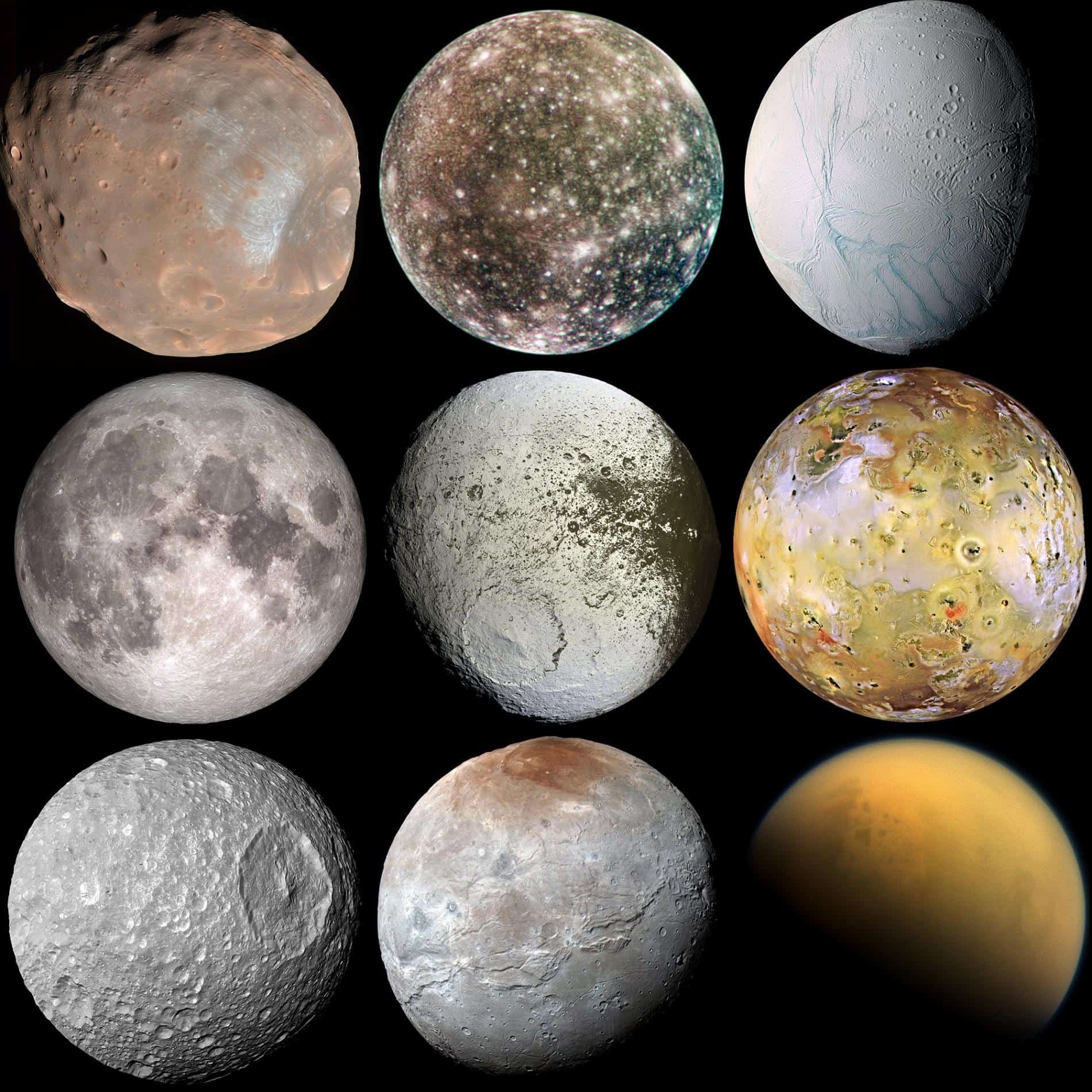
Moons are very fascinating since they may host life, but apart from this, they play critical roles in a planet's habitat and even habitability. Without our Moon, Earth would no longer have tides, and it might not even have seasons. Let's see what a moon is, how do they form, or if a moon can have satellites of its own!
What is a Moon?
Moons are natural satellites that orbit planets, dwarf planets, and asteroids in our Solar System. They come in different types, shapes, and sizes, and some of them even have atmospheres and hidden oceans.
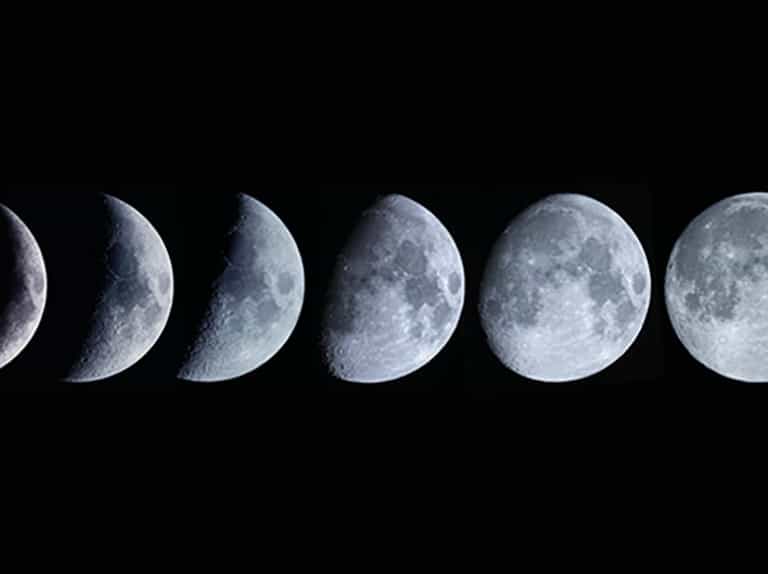
The only thing that makes the difference between some moons and a planet is what they revolve around. Planets like Earth and Jupiter, for example, revolve around the Sun, while a moon revolves around a planet, a dwarf planet, or an asteroid. To sum up, moons circle the celestial objects that orbit the Sun or another star.
How do Moons Form?
Most of the moons were formed from the discs of dust and gas that circulated around the planets during the early Solar System, billions of years ago. Other moons are former asteroids that have been captured into orbit by a larger body's strong gravity.
But two of the moons in our solar system have a peculiar history. Earth's Moon, Luna, and Charon, Pluto's moon, have been formed from the dust and debris raised from their own planets.

According to some theories, Earth was hit by a Mars-sized meteor 4.5 billion years ago, and the particles that raised into orbit after the collision joined and formed in what is known today as the Moon. It is believed that the same thing happened to the dwarf planet Pluto, and thus Charon was born.
Does Every Planet / Dwarf Planet Have a Moon?
Even though there are over 600 discovered moons in our Solar System, they are not equally distributed. Some planets have dozens of moons, and some have no moons at all.
Mercury and Venus are the only two planets that have no moons. Mercury can not hold a moon of its own because it is too close to the Sun. For this reason, any possible moon would either be sucked into the Sun's orbit and would melt, or it would crash into Mercury.
On the other side, the reason why Venus doesn't have any moons is a complete mystery, but scientists are working towards solving it. Many believe that the reason is the same, it is too close to the Sun, and also, it has a slow rotation, which means weak gravity.
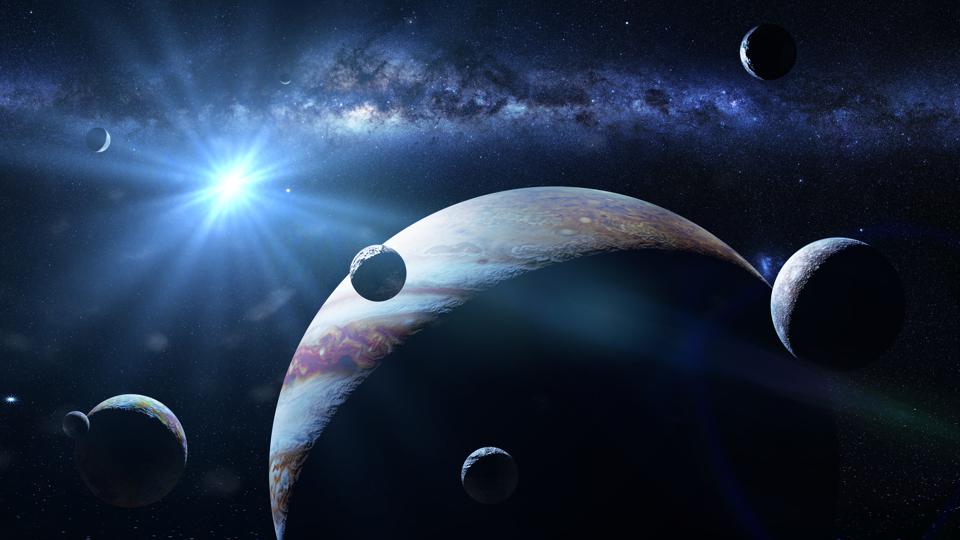
Saturn is the planet with the most moons, with 53 named moons and 29 moons waiting for confirmation, amounting to a total of 82. Next in line is Jupiter, with 79 moons, and the biggest moon in our Solar System, Ganymede, is orbiting around Jupiter.
Earth has only one Moon, also known under the name Luna, Selene, or Cynthian. The Moon was discovered in prehistorical times, long before any other moons.
Number of Moons by Planet
| Planet | Number of Moons |
| Saturn | 82 |
| Jupiter | 79 |
| Uranus | 27 |
| Neptune | 14 |
| Mars | 2 |
| Earth | 1 |
| Venus | 0 |
| Mercury | 0 |
Number of Moons by Dwarf Planet
| Dwarf Planet | Number of Moons |
| Pluto | 5 |
| Haumea | 2 |
| Eris | 1 |
| Ceres | 0 |
| Makemake | 0 |
Fun Facts About Moons
- If a moon's name begins with a letter and a year, like S/2004, one of Neptune's 14 Moons, it is considered a provisional moon. The respective Moon will receive a proper name only after additional observations confirm its discovery.
- For many years, it was believed that only planets and dwarf-planets could hold moons in their orbits, but in 1993 the Galileo spacecraft flew past asteroid Ida and discovered a small moon named Dactyl. After this discovery, it was established that asteroids could also have moons.
- The first published discovery of moons, except for the Earth's, was made by Galileo Galilei in 1610. He discovered four of the moons that orbit Jupiter, known today as the Galilean moons.
- Most of the moons in our Solar System get their name from mythological characters. For example, the newest discovered Moon was named Bergelmir, after a giant Norse God. However, Uranus' moons do not follow this rule. They are named mostly after literary characters, such as Ophelia and Puck, from William Shakespeare's plays, or Belinda and Ariel from the poems of Alexander Pope.
Size and Comparison
Every Moon differs in size and shape. Some of them are large enough to have been rounded by their own gravity, while others still have an uneven shape.
The largest Moon in our Solar System is Ganymede, a satellite of Jupiter. It reaches up to 5262 kilometers / 3269 miles, and it is larger than the planet Mercury.
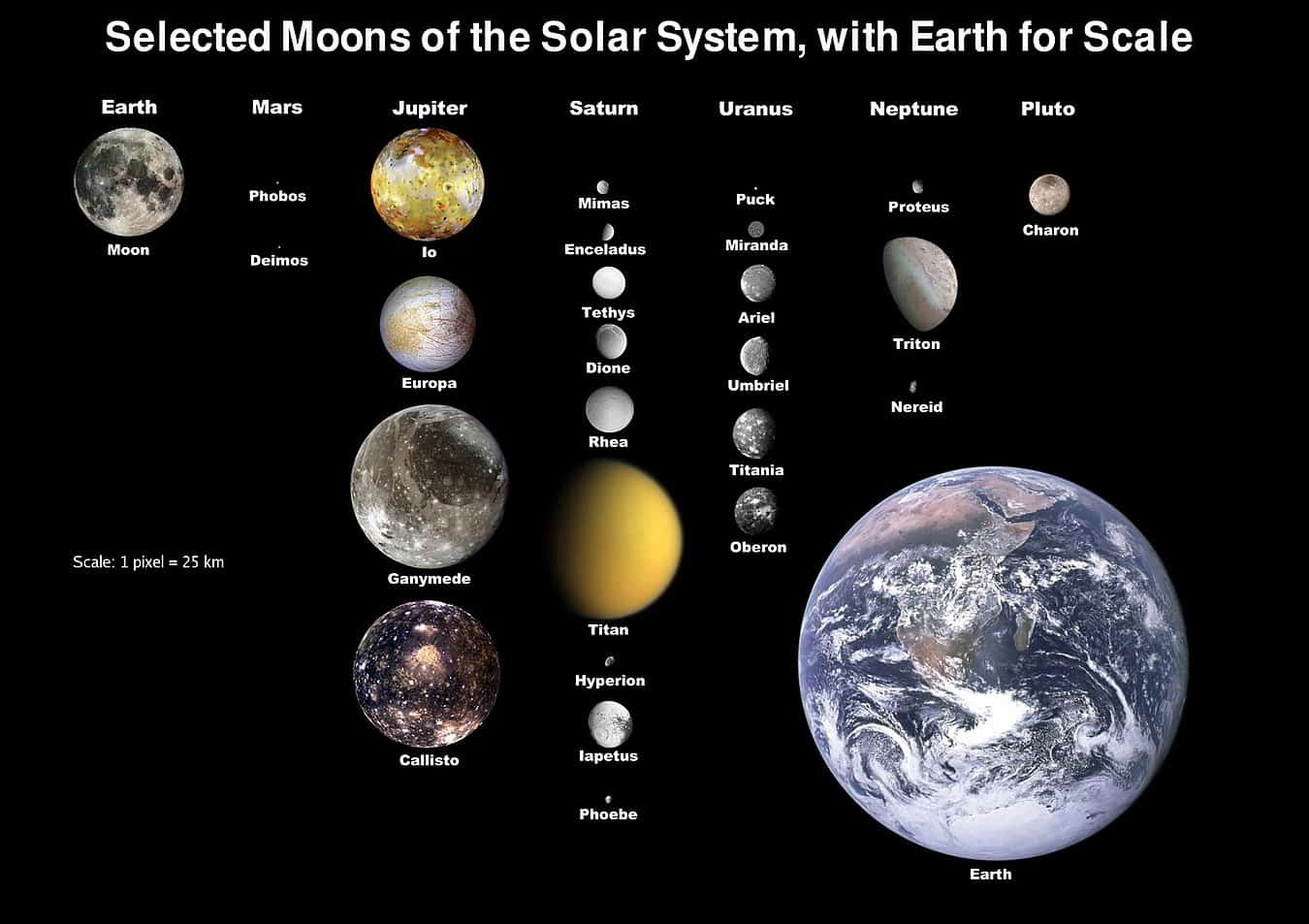
Our Moon measures 3476 km / 2159 mi, and it is the fifth-largest Moon, being bigger than the dwarf planet Pluto.
Trivia
Can Life Exist on a Moon?
For a satellite/moon to be hospitable to life, it must have an atmosphere, water, and oxygen, and last but not least, an acceptable average temperature that does not vary much over time.
Two moon candidates have been discovered in our Solar System, which may host life: Jupiter's moon Europa and Saturn's moon Enceladus.
Even though Enceladus is habitable at first sight, it doesn't mean it can sustain human life. Why? Because it is mostly covered in clear ice, and its surface temperatures can reach -198 oC / -324 oF.
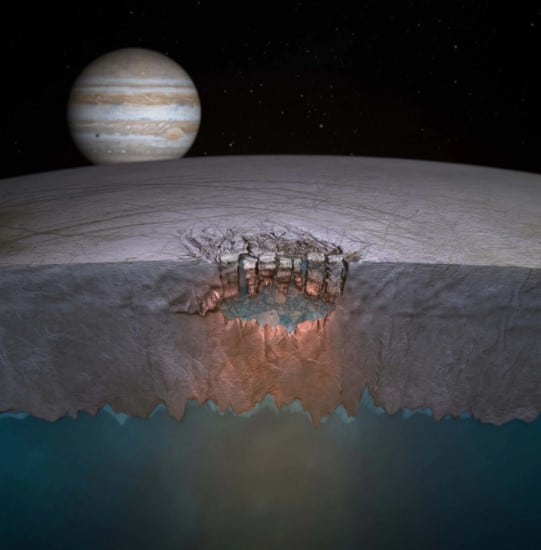
Europa, on the other hand, is more fit for sustaining life. It was discovered that the tidal forces between Europa and Jupiter could generate enough heat to keep the water liquid and the temperatures at an acceptable level.
Since Europa has a heat source, water, and an atmosphere with oxygen, it is the best candidate for harboring life. However, another problem arises. Jupiter is believed to emit radiations that reach up to its moon. This would make life impossible on its surface, but scientists are eager to investigate more.
These are the conditions needed for harboring superior life organisms, but some microorganisms do not need oxygen or heat to survive. For this reason, it would be impossible to say if a moon hosts life or not without examining it in detail. Soil and water samples must be examined to establish if any form of life exists on the surface.
Do Moons have Moons?
No moons that orbit other moons have been discovered so far, but the question does exist. Can moons have moons? The term submoons have been coined, and scientists are investigating this matter.
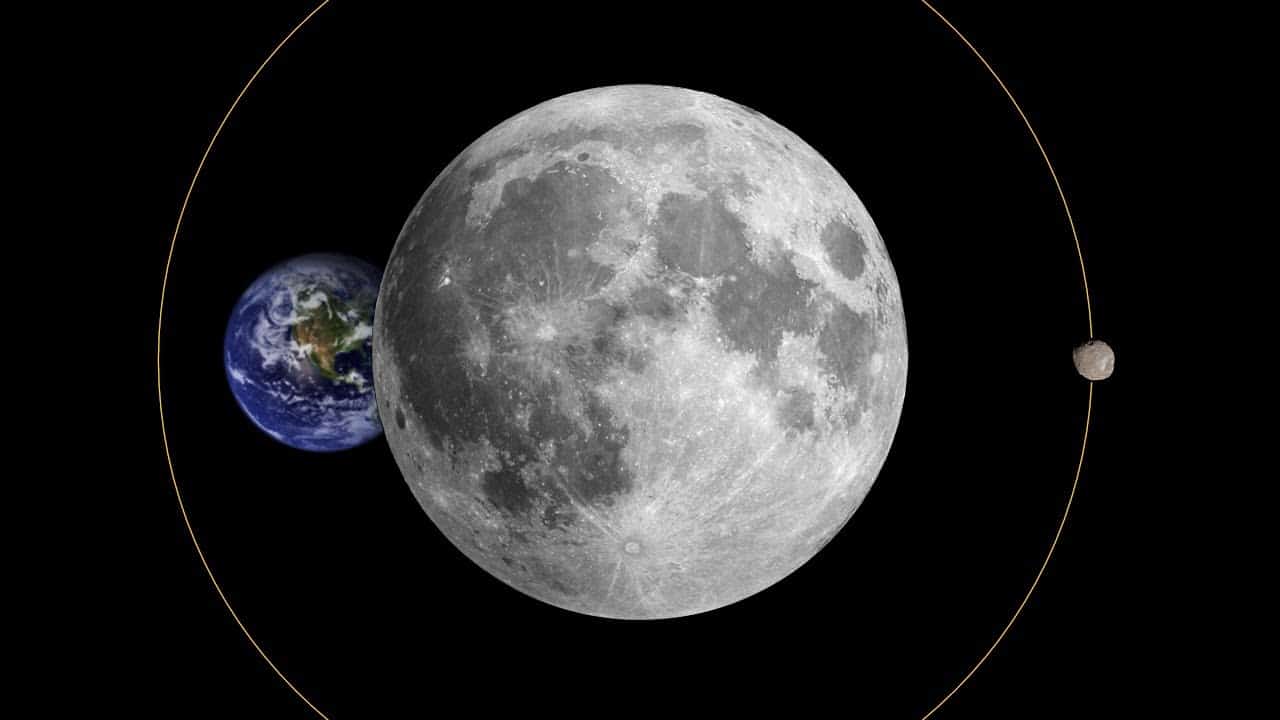
In theory, it is possible for the larger moons to have submoons, but the problem is that many of them have unstable orbits. As a result, they can not hold a submoon for an extended period of time.
How Many Moons Does our Solar System Have in 2020?
As of 2020, there are over 600 moons in our Solar System. In the past few years, many new moons have been discovered, and it is believed that many others are yet to be found.
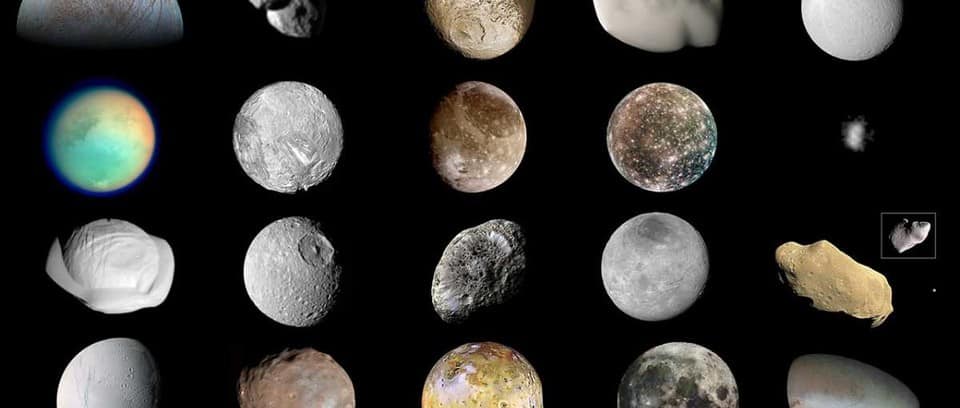
We know of 204 moons that orbit planets, 309 asteroid moons, eight dwarf planet moons, and 111 other trans –Neptunian moons. This sums up to a total of 632 moons.
The term trans- Neptunian moons is used to describe the moons that orbit around the minor planets of our Solar System. These are not planets but potential dwarf planets, and since October 2020, there are 416 minor planets suspected to have moons.
Sources:
Image Sources:
- https://www.nationalgeographic.com/content/dam/science/2019/07/09/the-atlas-of-moons/intro_collage_promo.ngsversion.1570548807545.adapt.1900.1.jpg
- https://images.immediate.co.uk/production/volatile/sites/25/2019/04/Phases_of_moon-HEADER-491cdb0.jpg?quality=90&resize=768,574
- https://upload.wikimedia.org/wikipedia/commons/8/82/Simple_model.png
- https://specials-images.forbesimg.com/imageserve/5f5cb920bd60d0e355dfcbb7/960x0.jpg?fit=scale
- https://upload.wikimedia.org/wikipedia/commons/thumb/4/4f/Moons_of_solar_system_v7.jpg/1350px-Moons_of_solar_system_v7.jpg
- https://www.washingtonpost.com/rf/image_1484w/2010-2019/WashingtonPost/2011/11/16/Health-Environment-Science/Images/europa1.JPG?t=20170517
- https://i.ytimg.com/vi/FVLjC0YvIo4/maxresdefault.jpg
- https://images.immediate.co.uk/production/volatile/sites/4/2018/08/top-moon-sranked-bf6310d.jpg?quality=90&resize=960%2C408
